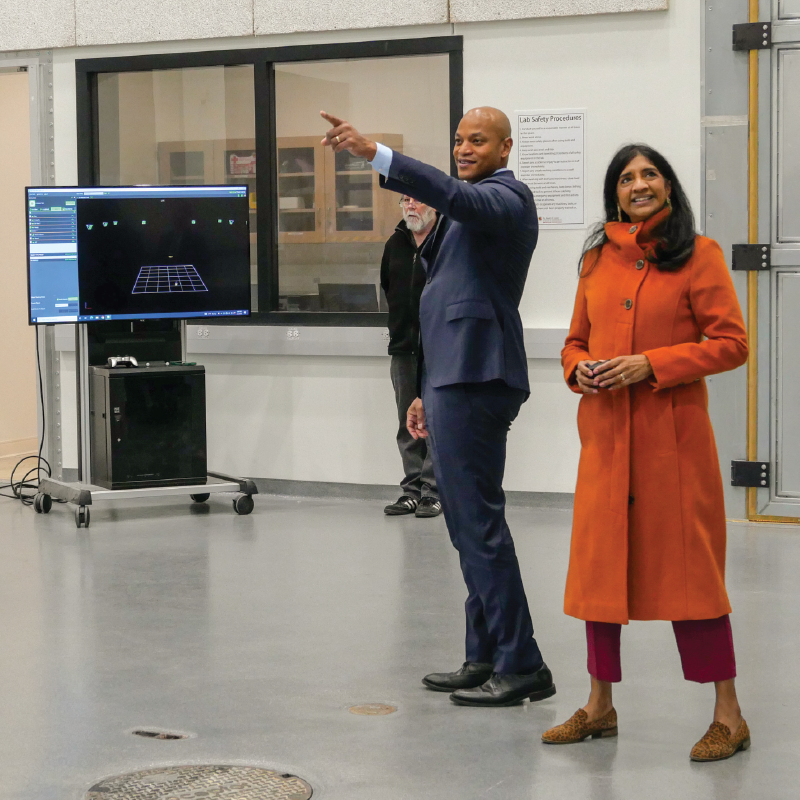News Story
Milner, Davis, Liu and Shayman win scalable multilayer control MURI
Four ISR faculty are sharing a new $4.3 million Air Force Multidisciplinary University Research Initiative (MURI) for "Scalable Multilayer Control of Joint Battlespace Networks." Senior Research Scientist Stuart Milner is the Principal Investigator; co-PIs are Professor K.J. Ray Liu (ECE/ISR) Professor Christopher Davis (ECE/ISR) and ISR affiliated Professor Mark Shayman (ECE).
Other institutions included in the award are Cornell, with PI Zygmunt Haas (ECE); and the University of Illinois (U-C), where the Co-PI is P.R. Kumar.
The five-year award was one of 26 announced by the Department of Defense in March. The MURI program is designed to address large multidisciplinary topic areas representing exceptional opportunities for future DoD applications and technology options.
Abstract
In recent work, one of our team members has proven that there is a basic limitation to the capacity of ad hoc, RF wireless networks. In the best case, the peak throughput attainable per user node decreases as the reciprocal of the square root of the number of nodes. While this a fundamental result regarding the non-scalability of certain wireless networks, it is a consequence of the characteristic that broadcast RF wireless communications share the spatial and frequency domains. It also pertains only to flat routing structures.
Our unique integrated approach is designed to develop network architectures that circumvent this fundamental limitation on performance scalability by utilizing:
- Topology control and physical layer technologies such as: high capacity, directional, wireless optical beams and smart RF antennas;
- Hybrid and content-based routing;
- Power control and dynamic base station assignment; and
- Hierarchical routing and traffic engineering using dynamic overlays consisting of high bandwidth tunnels.
In order to meet the challenge of selection and reconfiguration of topologies, we will integrate mechanisms from communications and networking technologies. These multilayer integrated control structures will use service, traffic, mobility, optical wireless propagation models, and radio/free space optics propagation impairment models to take proactive actions to maintain joint battlespace internets. The control structures will also be designed to take reactive actions to be able to respond to link failures, changes in group membership, etc.
Methodologies will include the generation of analytical models and practical measures of complexity and scalability as well as empirical investigations using discrete event simulation. Network control and management policies will be derived using stochastic control and stochastic AI techniques, especially those that permit policies to be obtained via simulation (e.g., reinforcement learning), and the scalable extensions of these techniques (e.g., neurodynamic programming).
The basic research program will focus on theory and experimentation in scalable algorithms and topology control techniques for joint battlespace networks.
Our integrated approach to creating a scalable framework for such networks builds on advances in the following technologies: routing (content-based routing; quality of service-based routing and traffic engineering), quality of service-based link selection, rapidly configurable physical networks through antenna beam forming and/or highly directional optical wireless beams, low overhead media access control, which allows the use of directional antennas or laser beams; and heuristic algorithms for rapidly evaluating multiple network topologies (graphs).
The scalability of the network depends on the successful and autonomous reconfiguration of the network topology. We are considering networks with as many as tens of thousands of dynamic users and routers, and we will model and simulate physical, link, network, transport, and application layer processes. This modeling will be carried out with a close connection to real-world performance at the physical layer.
Published April 2, 2002









